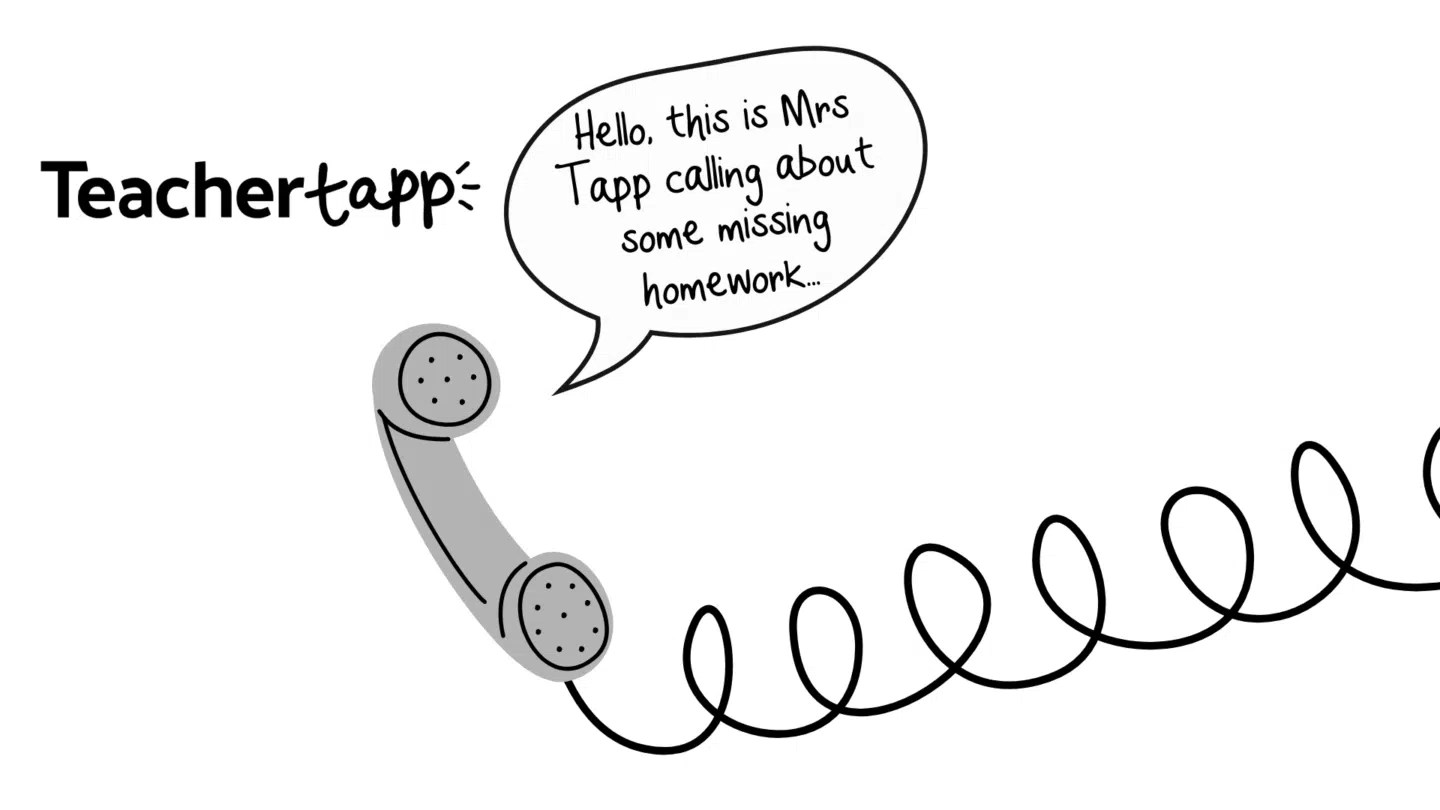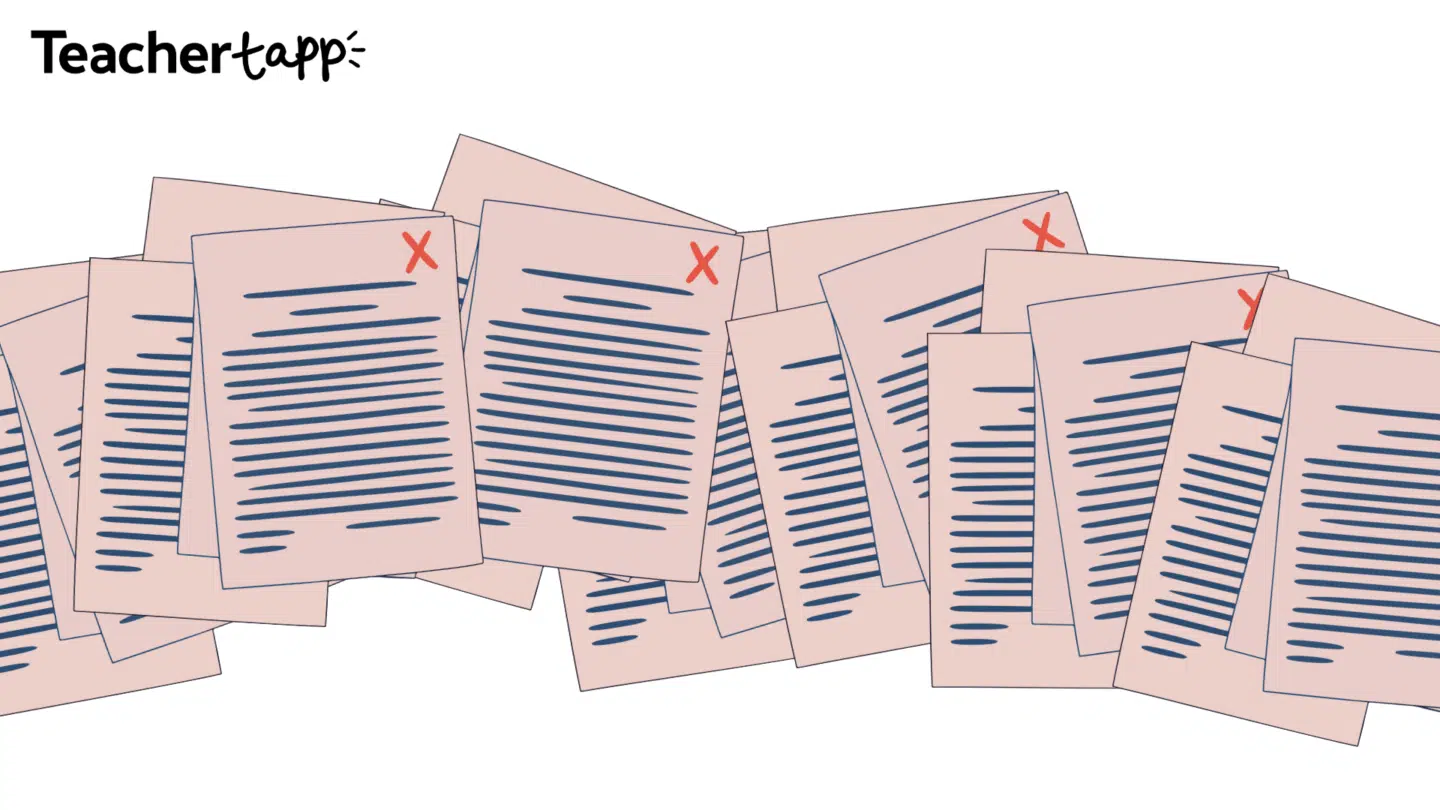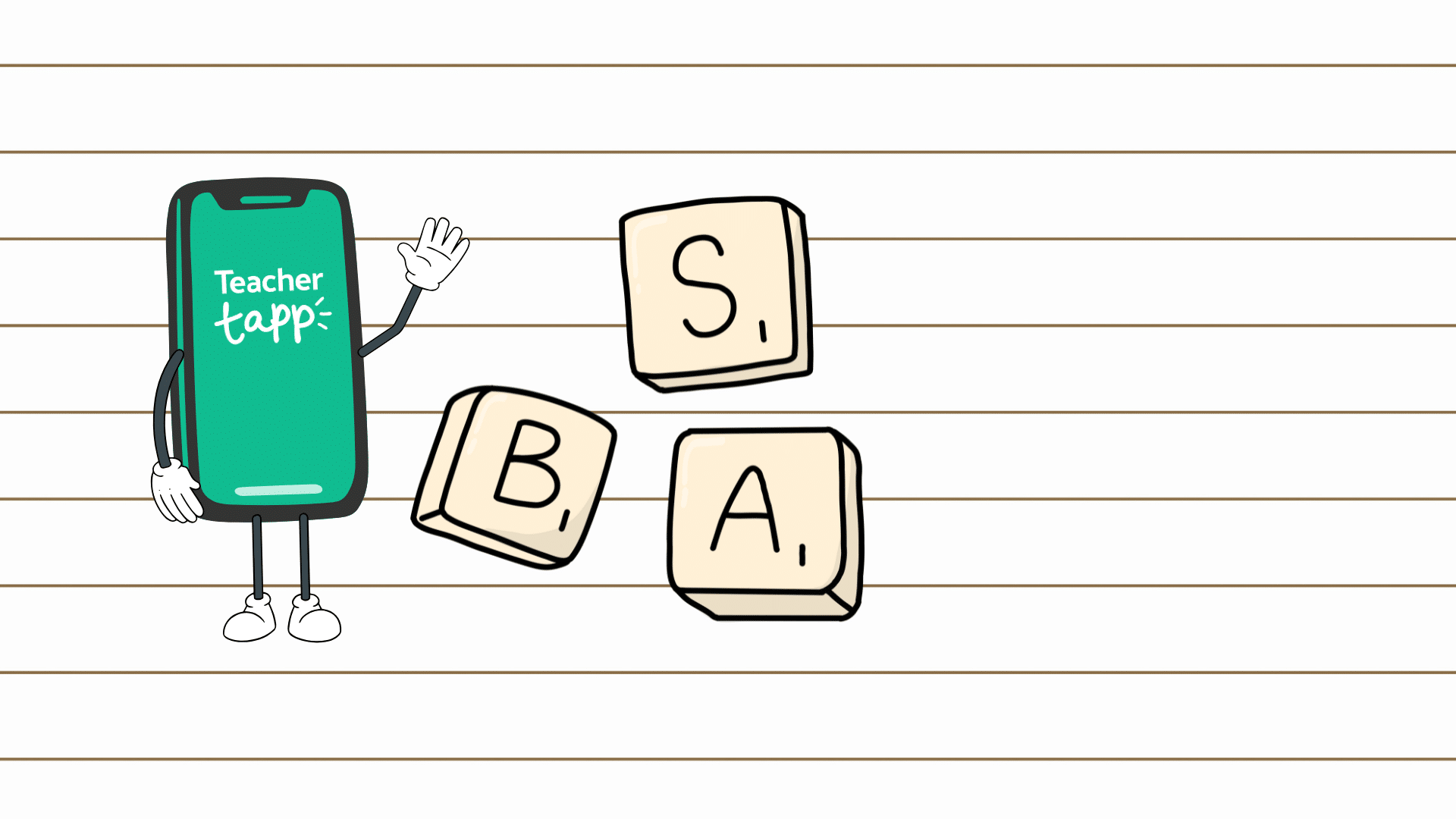
English is often complained about as a language full of difficult spelling patterns. And no one understands those struggles like the poor teachers in the classrooms trying to teach the spellings!
We thought it was about time we dug into the data on spellings – and find out exactly what the deal in schools is when it comes to marking, testing and rating their own spellings…
Kicking things off – let’s look at how confident the teachers are about their own spelling. Good news – the majority believe in their own spelling ability (88% agree, with 63% strongly agreeing), and generally the older you are, the more confident you get.
But – here is the interesting thing – some teachers are MUCH more confident that others.
🇫🇷🇩🇪🇪🇸 Teachers of Modern Foreign Languages (MFL) are the MOST confident in their spelling (88% strongly agree).
📖 English teachers rank second (73% strongly agree).
🏫 Closely followed by KS2 teachers (67%).
Everyone else was broadly similar – and this makes sense when you consider just how much spelling teachers of MFL, English and KS2 have in their subjects and assessments!
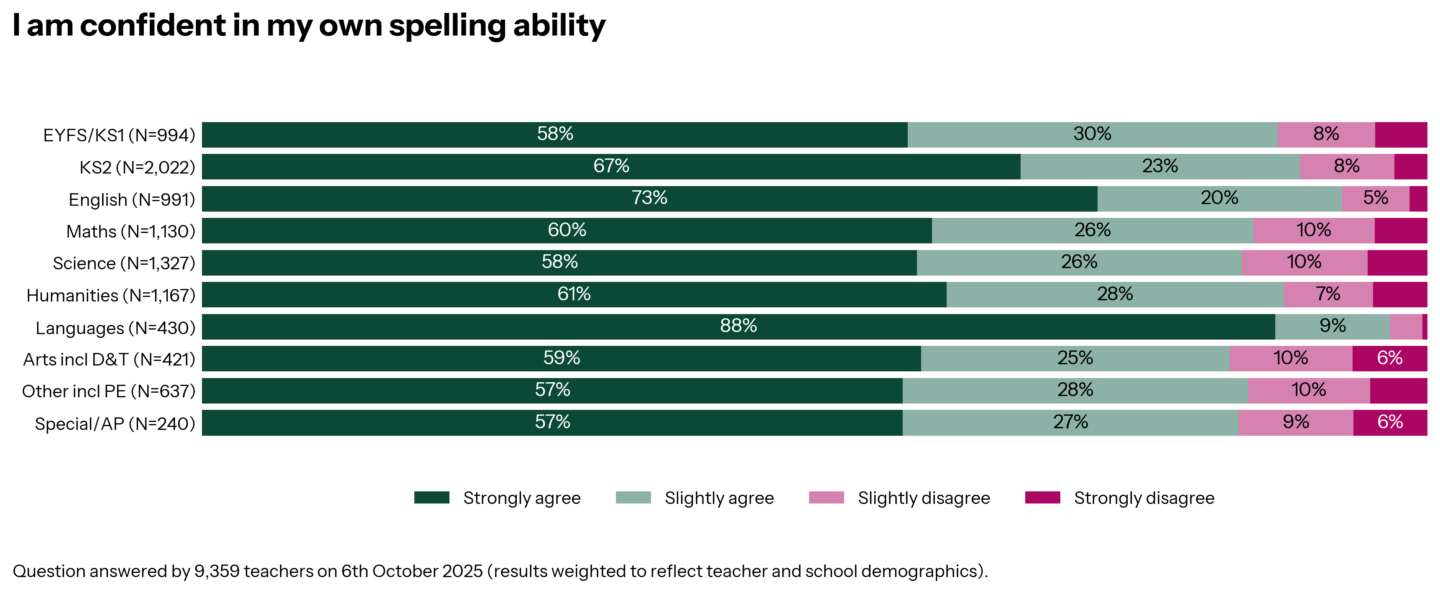
Spelling policies
In secondary schools, marking policies will vary between departments, and leaders take note: just because it’s in the policy, it doesn’t mean that the teachers know what it says.
Maths teachers are the most likely to not know what their marking policy says about spelling (34%), with English teachers at the other end of the spectrum (14%).
Among those teachers who DO know what their policy says, except for maths and science, spelling was mentioned in 70+% of policies. Only 58% of maths teachers and 64% of science teachers mention spelling in their marking policy.
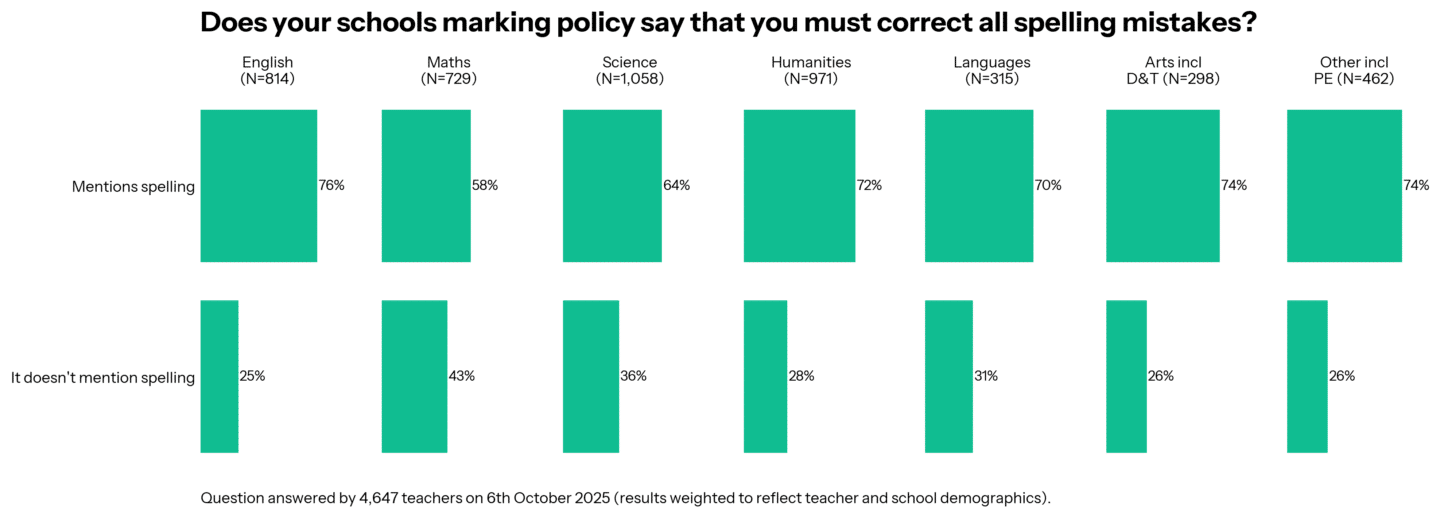
However, just because that’s what the policy says, that doesn’t mean that’s what is happening in reality.
Just 32% of maths teachers corrected spelling when they last marked students’ work, compared to 95% of English, 95% of MFL teachers and 86% of humanities teachers. And this makes sense – after all, how much spelling is there to mark in maths homework?! But there is undoubtedly a lot more marking going on in English and MFL vs the rest of the school.
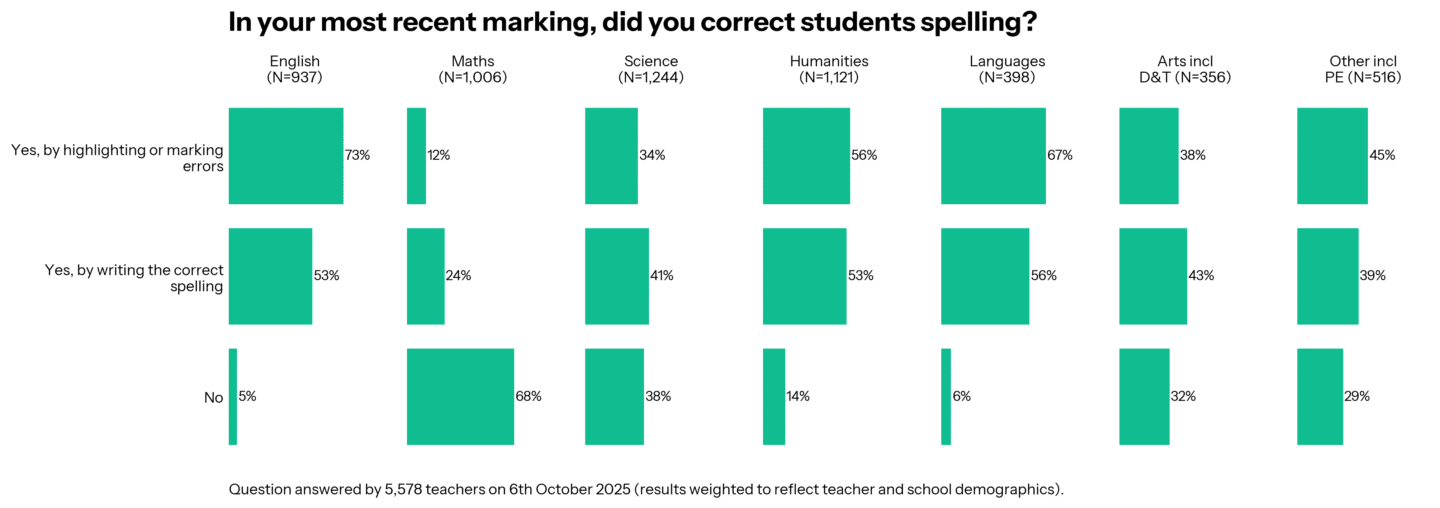
And how about when we compare behaviour vs the school policy?
If the marking policy mentioned spelling, 81% were correcting spelling, but among those without spelling explicitly mentioned, it was about half and half (53%).
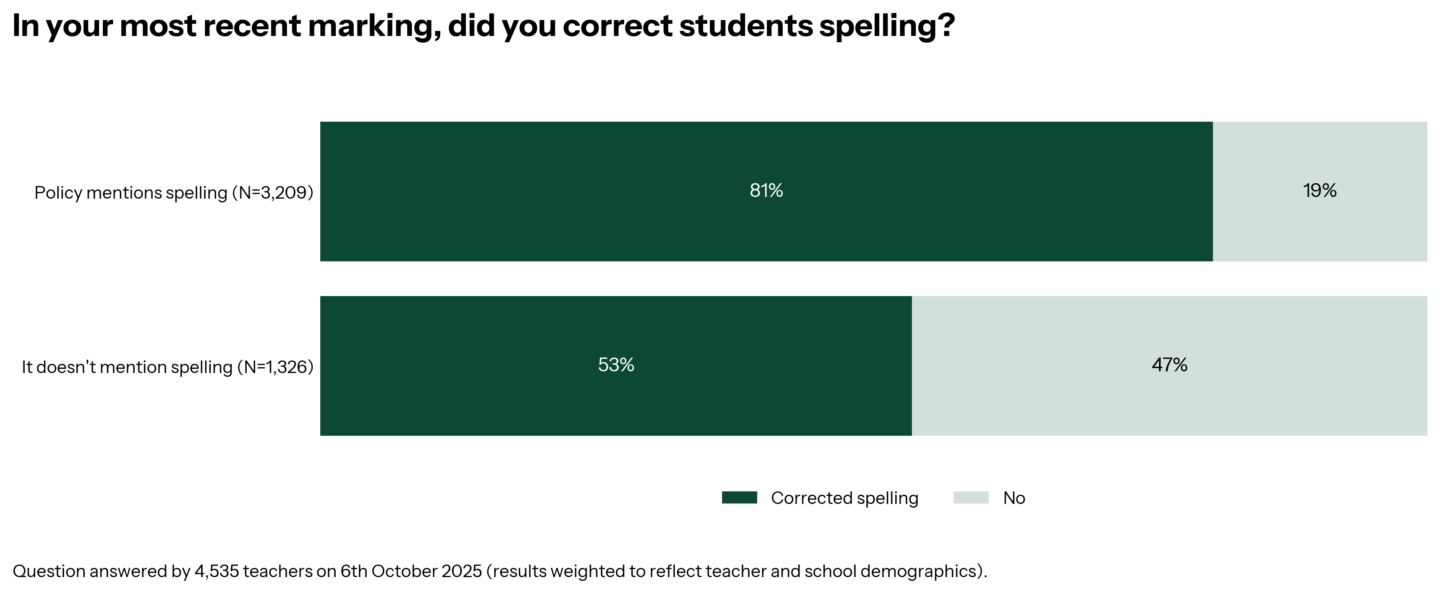
Spelling tests
In primary, we wanted to find out how common it was to set a spelling test. And they’re happening in more classrooms than they are NOT happening. Three-quarters run spelling tests, with 57% of those setting weekly checks.
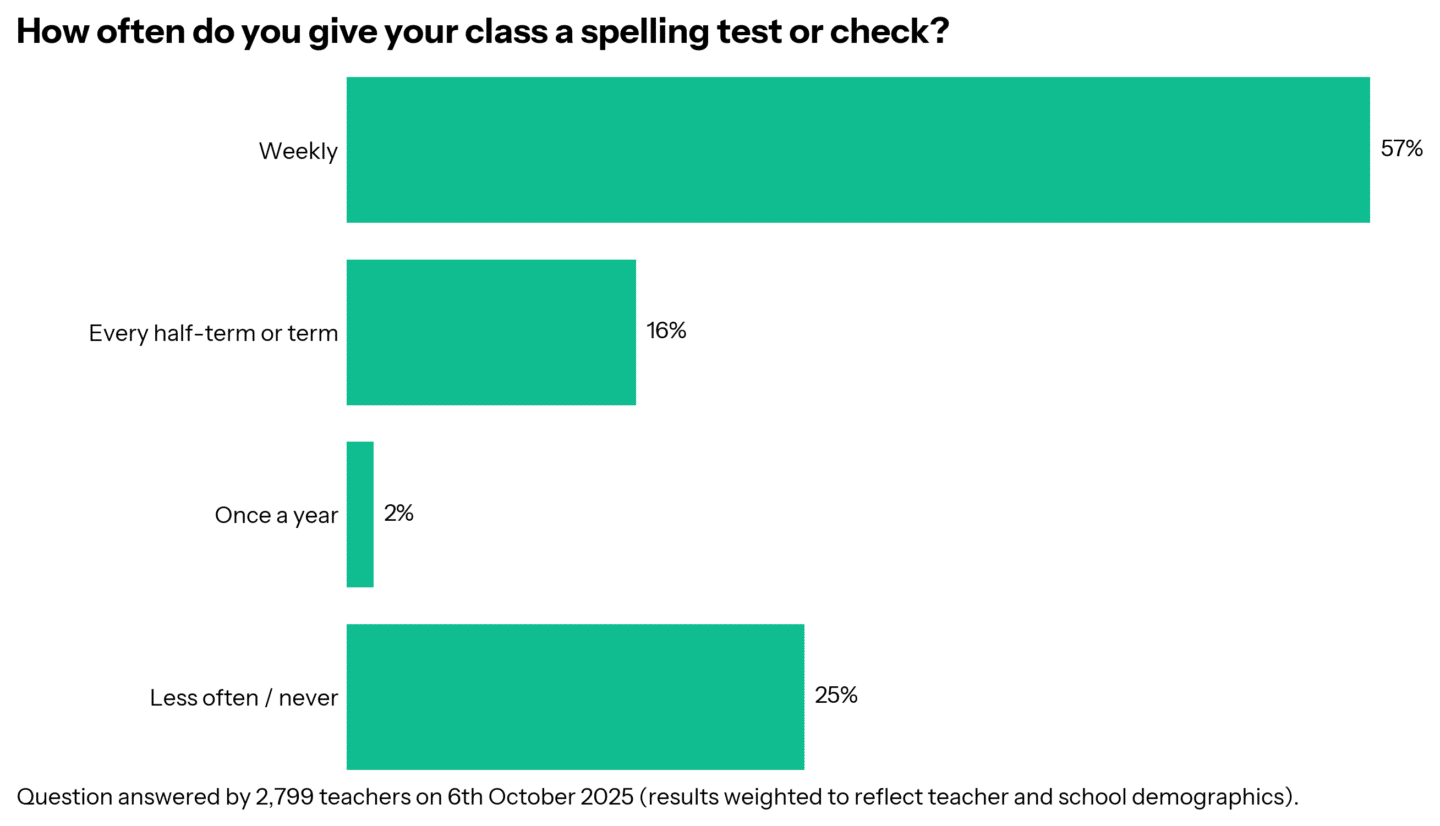
But do we rate spelling tests? Given how many teachers give classroom time over to the activity, support isn’t quite as overwhelming as you might have thought. In fact – teachers are pretty split!
And if you thought one phase might favour spelling tests over another, then you would be wrong! EYFS and KS1 teachers were almost exactly equally split on them as KS2 teachers (47% agree vs 49% agree respectively)!
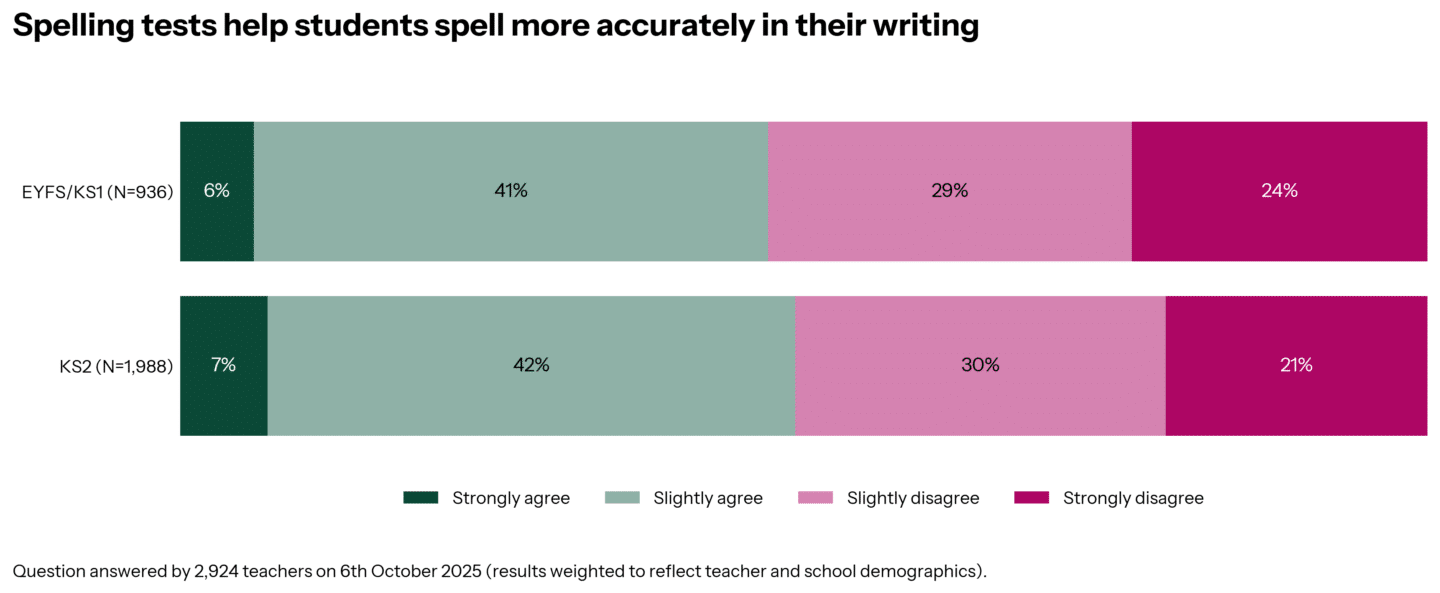
And those teachers who are doing weekly spelling test – 39% disagree that spelling tests help 🫠.
So what DO teachers say helps students learn spelling? More than 2,000 Teacher Tappers wrote in with their tips – here is a summary of their gold star advice!
🗣️ 1. Verbal and Auditory Tricks
Sometimes, the best way to remember a word is to say it — even if it sounds ridiculous. Many teachers told us they encourage pupils “to say the words as they are spelt,” pronouncing them exactly as the letters appear on the page.
Others get students to over-stress tricky or invisible letters, such as in “WeDnesday” or “IsosCeles,” turning silent letters into memorable sounds.
And it’s not just about the pronunciation — rhythm helps too. Teachers use clapping, chanting, and choral repetition to get spellings to stick. Add in the occasional rhyme or song, and suddenly even onomatopoeia feels manageable!
“Repeatedly write it out or say it as it’s written rather than as it’s said.”
🧩 2. Analysing Word Structure
Quite a few teachers mentioned that pupils make more sense of spelling once they understand where words come from. As one Teacher Tapper put it, it’s about “learning about the etymology of words.”
Breaking words down into parts — prefixes, roots, and suffixes — gives pupils useful clues. For example, spotting that cian often refers to a profession, or that tion turns a verb into a noun, makes English seem a little less chaotic.
“Break the word down into parts.”
“Learning common roots, prefixes and suffixes is key.”
✍️ 3. Practice, Practice, Practice
When it comes to spelling, repetition still rules. Teacher Tappers are big fans of the Look, Cover, Write, Check method — or, as one simply put it, “Look cover spell check.”
Others prefer more structured routines, like “writing out the correct spelling 3 times” or using mini whiteboards for quick-fire end-of-lesson quizzes:
“Write on mini whiteboards at the end of a lesson every now and again – quick quiz.”
Low-stakes spelling tests, regular practice, and visualising words in the air all help pupils (and their teachers!) build long-term memory.
📚 4. Making the Most of Resources
Finally, many teachers stressed the importance of surrounding pupils with words — through reading, dictionaries, and even technology. Frequent reading exposes children to correct spellings in context, while glossaries and word walls provide easy reference points.
And for some, tools like spellcheck or Grammarly are not shortcuts — they’re essential supports:
“Repetition, a dictionary, and AI tools on word documents (I am dyslexic, so using autocorrect is a must at times).”
5. The Best (and Funniest) Mnemonics Teachers Use
When it comes to spelling, everyone has their tricks — and teachers are full of brilliant (and occasionally bizarre) mnemonics. Here are some of the favourites we’ve seen pop up in classrooms:
Necessary
Lots of people remember this one by thinking about clothes or food:
🧥 One collar, two sleeves (for one ‘c’ and two ‘s’s)
🥪 Or the full lunchbox version: Never eat cream, eat salad sandwiches and raspberry yoghurt!
Because
A classic: Big Elephants Can Always Understand Small Elephants.
Rhythm
The one that makes you want to dance: Rhythm Helps Your Two Hips Move.
Separate
There’s A RAT in separate — or you can sePARate into PARts.
Believe
Remember: There’s always a “lie” in believe.
Stationery vs Stationary
This one still trips up adults!
✉️ Stationery has an e, like envelope.
🚗 Stationary means not moving — think car in action (or not, in this case).

